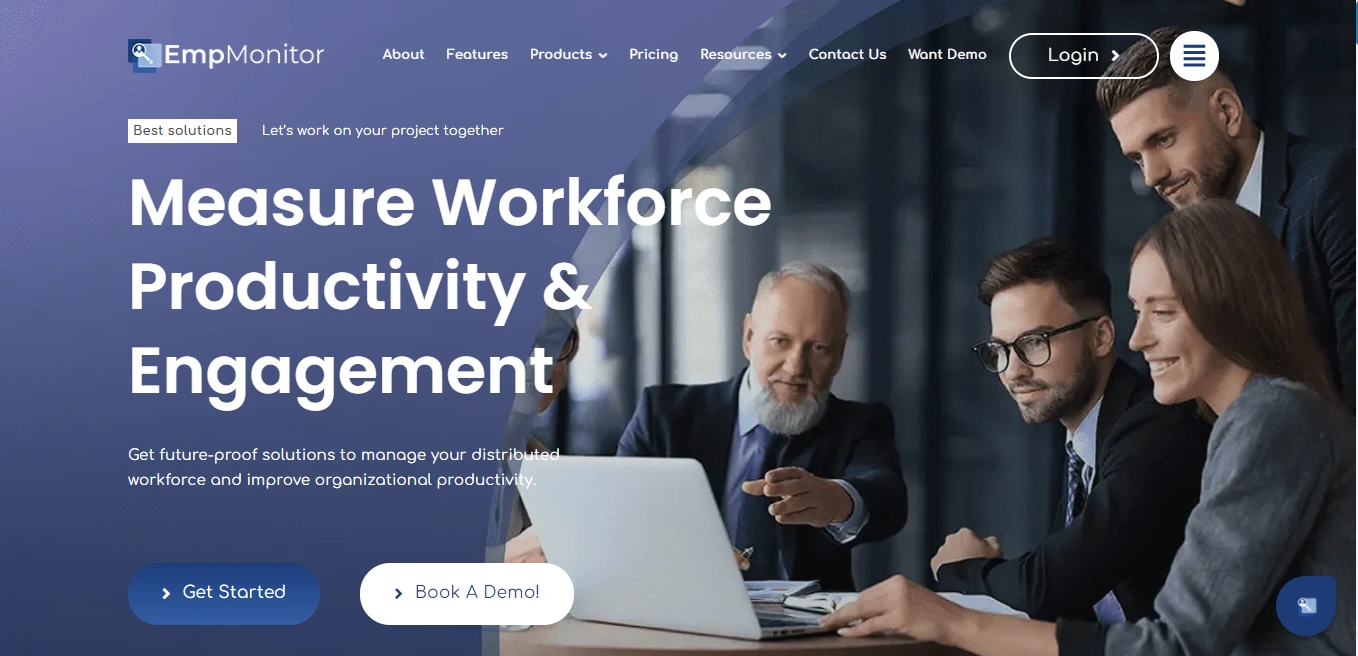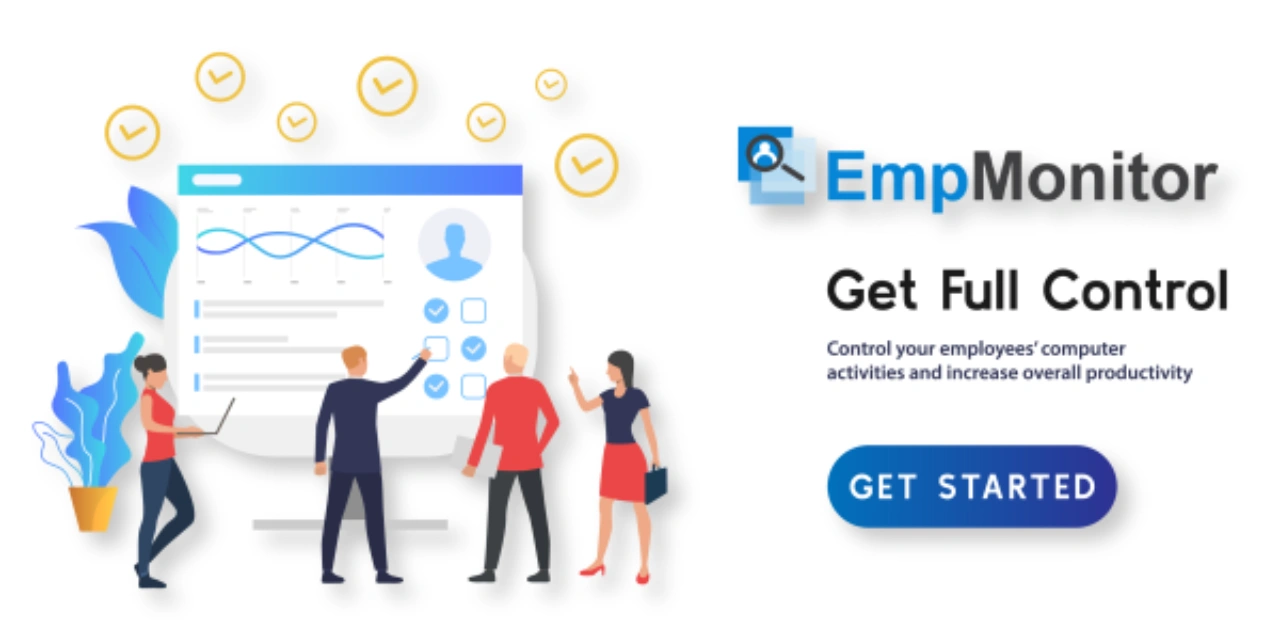Absenteeism in the workplace is a persistent issue that plagues many organizations, impacting productivity and dampening team spirit. The ongoing struggle to cover shifts, maintain workflow, and uplift morale can be draining. However, there’s light at the end of the tunnel; solutions exist to address this challenge.
Understanding the root causes and implementing effective strategies to address absenteeism is crucial for fostering a healthy work culture. In this comprehensive blog, we’ll delve deep into the root causes of absenteeism, from burnout to disengagement, and provide practical solutions to minimize its impact.
Whether it’s implementing flexible work arrangements, promoting a positive company culture, or offering support programs, we’ll explore strategies to foster a more engaged and present workforce. Let’s navigate the challenges of absenteeism and pave the way for a more productive and harmonious workplace.
In a hurry? Listen to the blog instead!
What Is Absenteeism In The Workplace?
Employee absenteeism, defined by Cascio & Boudreau (2015), refers to any failure to report for or remain at work as scheduled, regardless of the cause. While typically unplanned, such as due to illness, absenteeism can also be planned, like during a strike or willful absence. Crucially, absenteeism excludes scheduled absences like vacation or personal leave.
Common synonyms include many reasons and leaves. Measurement often relies on the absenteeism rate, calculated by dividing absent days by the available workday period. This metric is a vital HR indicator, spotlighting potential issues within the workforce or organizational culture when absenteeism is high.
What Are The Types Of Absenteeism In The Workplace?
Managers and employers need to know about the different kinds of not being at work. It helps them handle when employees aren’t there. Let’s take a closer look:
Authorized And Planned Absences
These absences are typically scheduled beforehand and approved by the employer. They include planned vacation time, medical appointments, maternity or paternity leave, and other prearranged time off. Because these absences are expected and agreed upon, employers can plan workload distribution accordingly, minimizing disruptions to productivity.
Unplanned But Genuine Absences
Despite employees’ best efforts to remain present at work, unforeseen circumstances can arise, necessitating unplanned absences. These genuine reasons include sudden illness, family emergencies, or unexpected accidents. While this absenteeism in the workplace can disrupt workflow, they are often unavoidable and require understanding and flexibility from employers.
Unauthorized Absences
This type of absenteeism occurs when employees are absent without proper approval or a valid reason. It may include persistent tardiness, unexplained absences, or deliberate refusal to attend work, such as participating in a strike or simply choosing not to show up. Unauthorized absences disrupt workflow and indicate potential issues with employee engagement, workplace culture, or management practices. Addressing and managing these absences effectively is essential to maintain productivity and morale within the organization.
What Impact Does Absenteeism Have On Organizations?
Excessive absenteeism in the workplace can have far-reaching consequences, affecting productivity, finances, and overall morale. However, the extent of absenteeism in the workplace varies depending on factors like the employee’s role and the company’s size.
For instance, a small marketing agency with only one website developer will feel the absence more acutely compared to a vast agency with multiple developers, as they can redistribute work easily.
Regardless of company size, absenteeism leads to:
- Reduced Productivity: Absent employees’ workload falls on their team, disrupting schedules and causing delays.
- Lower Quality Work: Increased workload can overwhelm remaining employees, leading to errors and potential client dissatisfaction.
- Financial Losses: Absenteeism results in costs for replacement staff, administrative expenses, and potential overtime pay.
- Negative Culture: Frequent absences breed resentment among coworkers and stress for management, affecting workplace dynamics.
- Decreased Motivation: Absenteeism can cause stress and financial strain for employees, leading to demotivation and low morale.
7 Root Causes Of Absenteeism In The Workplace
Absence from work arises from a combination of controllable and uncontrollable factors. While you can address specific issues with assistance from the employee’s HR department or through team support, others remain beyond anyone’s influence.
The primary reasons for absenteeism encompass
Minor Illness
Minor illnesses, like the common cold or flu, frequently lead to workplace absence. Despite their inevitability, these illnesses pose a significant problem due to their disruptive nature. Employees may feel compelled to stay home to recover, resulting in decreased productivity and potential work delays.
Prompt communication with supervisors and adherence to sick leave policies are essential to alleviate the issue. Employers face challenges in maintaining operational continuity and may incur additional costs associated with absenteeism in the workplace, such as hiring temporary replacements.
Workplace Bullying Or Harassment
Workplace bullying and harassment affect employee morale and mental well-being, resulting in elevated absenteeism rates. Verbal abuse, exclusion, intimidation, and discrimination contribute to a hostile environment, triggering stress and disengagement.
Addressing these behaviors is crucial for fostering a supportive workplace culture where all employees feel valued and respected. By combating bullying and harassment, organizations can mitigate absenteeism and promote a positive work environment conducive to productivity and well-being.
Mental Health Issues
In recent years, many companies have prioritized the mental well-being of their employees, especially amid the Covid-19 pandemic. Research indicates a concerning rise in mental health issues among workers, with a significant portion hesitant to disclose their struggles due to fear of repercussions.
It has highlighted the need for robust support systems and policies within workplaces. Failure to address mental health concerns can lead to increased absenteeism in the workplace, impacting employee well-being and company productivity.
Major Illness & Long-Term Conditions
Serious illnesses or long-term medical conditions can result in extended absence from work. Employees may require time off for surgeries, treatments, or recovery. Employers can support employees facing major illnesses by implementing flexible leave policies, offering accommodations upon return to work, and providing access to healthcare benefits.
Familial Matters
Family-related emergencies or obligations. It might include caring for a sick family member or attending to childcare needs leading to unplanned absences from work. Employers can offer flexible work arrangements, such as telecommuting or flexible scheduling, to accommodate employees’ familial responsibilities and reduce absenteeism in the workplace.
Approved Leave
Planned absences, such as vacation time, bereavement leave, or parental leave, are typically easier to manage as they are prearranged and approved by the employer. However, employers should still ensure adequate staffing coverage during these periods to minimize disruptions to workflow.
Team & Management Issues
Conflict or dissatisfaction with colleagues or management can contribute to absenteeism as employees may feel demotivated or disengaged. Employers should foster positive working relationships, provide leadership training for managers, and address any underlying issues contributing to team or management conflict.
However, with the escalating technology many software and tools are available to handle workforce management issues. One such revolutionary and leading software in the landscape is EmpMonitor.
EmpMonitor is a comprehensive employee monitoring and workforce management software designed to enhance productivity, security, and efficiency.
By understanding the various causes of absenteeism in the workplace and implementing proactive measures to address these root causes, employers can create a supportive work environment that promotes employee well-being and reduces absenteeism.
EmpMonitor- Workforce Management Software
EmpMonitor is a game-changer in the realm of employee management. It offers a holistic solution that fosters transparency, accountability, and trust within organizations. Its intuitive interface and seamless integration empower employers to nurture a culture of productivity and efficiency without compromising employee autonomy.
Real-time Monitoring
EmpMonitor offers real-time monitoring of employees’ activities, allowing employers to track their computer usage, websites visited, applications used, and, active time spent on tasks.
Productivity Analysis
The employee monitoring software provides detailed productivity reports and analytics, allowing employers to evaluate employee performance, identify top performers, and address productivity issues.
Attendance Tracking
EmpMonitor offers attendance tracking features to monitor employee login and logout times, along with breaks and idle time, helping employers manage workforce attendance policy for employees.
Remote Work Monitoring
With the rise of remote work, EmpMonitor enables employers to monitor employees’ activities and productivity even when they work from home or off-site, ensuring accountability and performance.
Screenshots
The software captures screenshots to provide visual insights into employees’ activities, helping employers verify productivity and identify unauthorized behavior.
EmpMonitor offers a comprehensive suite of features to help employers monitor and manage employee activities effectively, enhance productivity, ensure security and compliance, and optimize workforce performance.
Read More
7 Employee Wellbeing Strategy For Better Workspace In 2024
How To Measure Employee Engagement At Your Workplace?
Employee Burnout: 7 Tips To Deal With Effective Workforce Management Solutions
Absenteeism In The Workplace Solution
Addressing absenteeism requires a multifaceted approach to understanding its root causes and implementing solutions. Here are several workforce management solution and strategies to combat absenteeism:
Embrace Workplace Flexibility: Providing options such as remote work or flexible hours can accommodate employees’ diverse needs, specifically beneficial for parents juggling work and family responsibilities. Employees can better manage their schedules and attend to personal commitments without sacrificing work performance by offering flexibility.
Boost Morale: Investing in initiatives, like wellness programs, professional development opportunities, and social events can contribute to a positive work environment. Employees who feel valued and supported are more likely to be engaged and committed to their roles, reducing the likelihood of absenteeism in the workplace.
Acknowledge Attendance: Recognizing and rewarding employees with consistent attendance reinforces the importance of reliability and punctuality. It can be done through formal recognition programs, verbal praise, or tangible rewards, motivating others to improve their attendance records.
Lead By Example: Consistent attendance and punctuality from leadership set the tone for the entire organization. When employees see that managers prioritize attendance and adhere to company policies, they are more likely to follow suit. Leaders should demonstrate accountability and professionalism in their attendance practices.
Train Managers: Equip managers with the necessary tools and skills to manage absenteeism in the workplace. It includes training on tracking absences, conducting return-to-work interviews, and addressing absenteeism issues fairly and compassionately. Effective communication and conflict resolution skills are essential for navigating sensitive discussions about attendance.
Support Struggling Employees: Provide resources and assistance to employees who experience persistent absences. It may involve providing access to employee assistance programs, offering flexible work arrangements, or facilitating discussions to address underlying issues contributing to absenteeism. Creating a supportive and empathetic environment can encourage employees to seek help and improve employee attendance.
Consider Disciplinary Measures: While disciplinary action should be a last resort, it may be necessary in cases where absenteeism persists despite efforts to address it. Enforcing absenteeism policies often sends a clear message about the importance of attendance and accountability within the organization. However, disciplinary action should be approached sensitively and fairly, focusing on corrective action rather than punishment.
The Bottom Line
Addressing absenteeism in the workplace is essential for maintaining productivity and fostering a positive work environment. By understanding the root causes of absenteeism and implementing proactive strategies, organizations can mitigate its impact and cultivate a culture of accountability and engagement.
EmpMonitor provides valuable insights and tools to help employers effectively monitor and manage employee attendance, supporting efforts to reduce absenteeism and enhance workforce productivity.
By taking a proactive approach to absenteeism management organizations can create a supportive and thriving workplace where employees feel valued, motivated, and empowered to contribute their best. Together let’s tackle absenteeism and build a brighter future for our workplaces.















